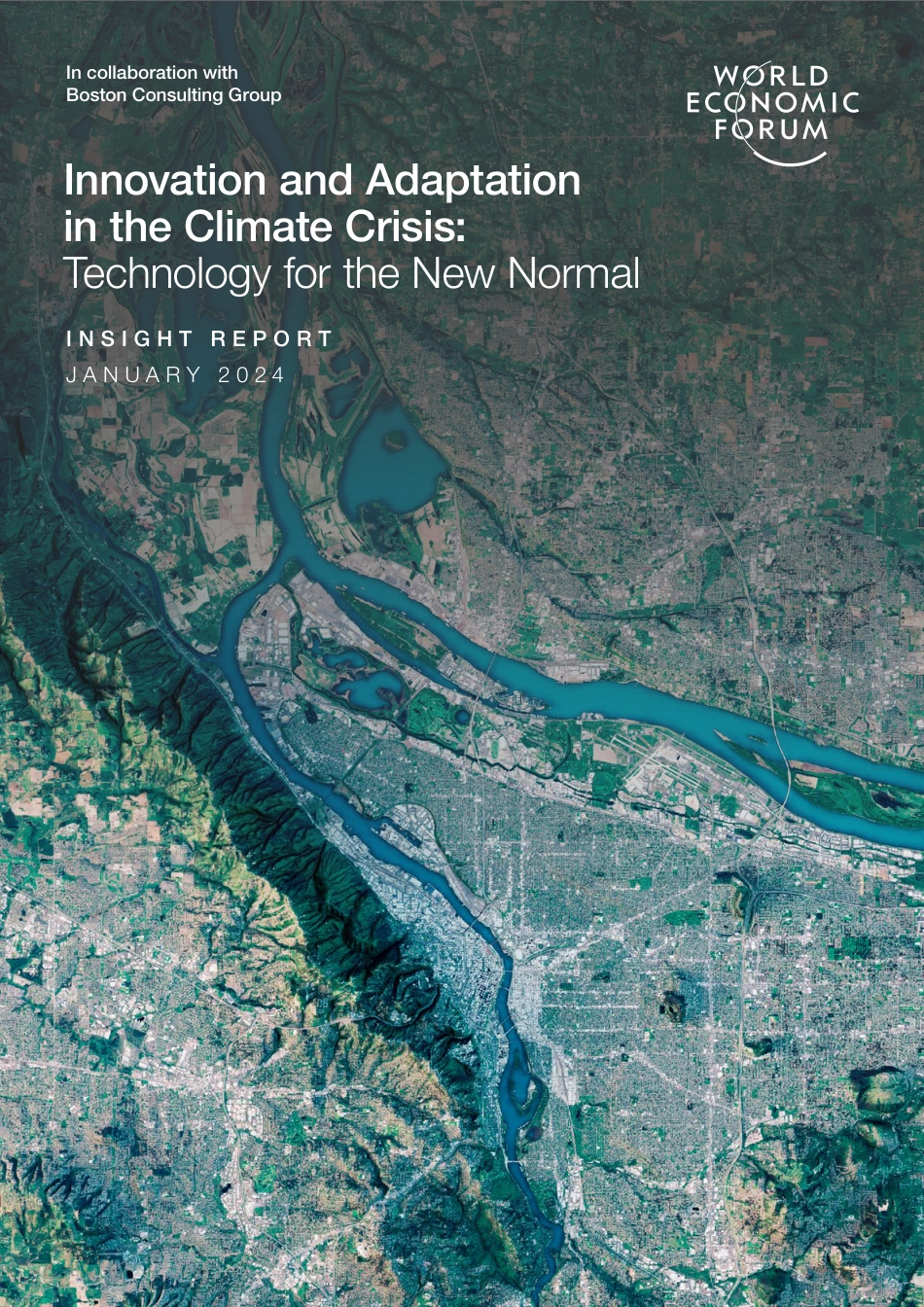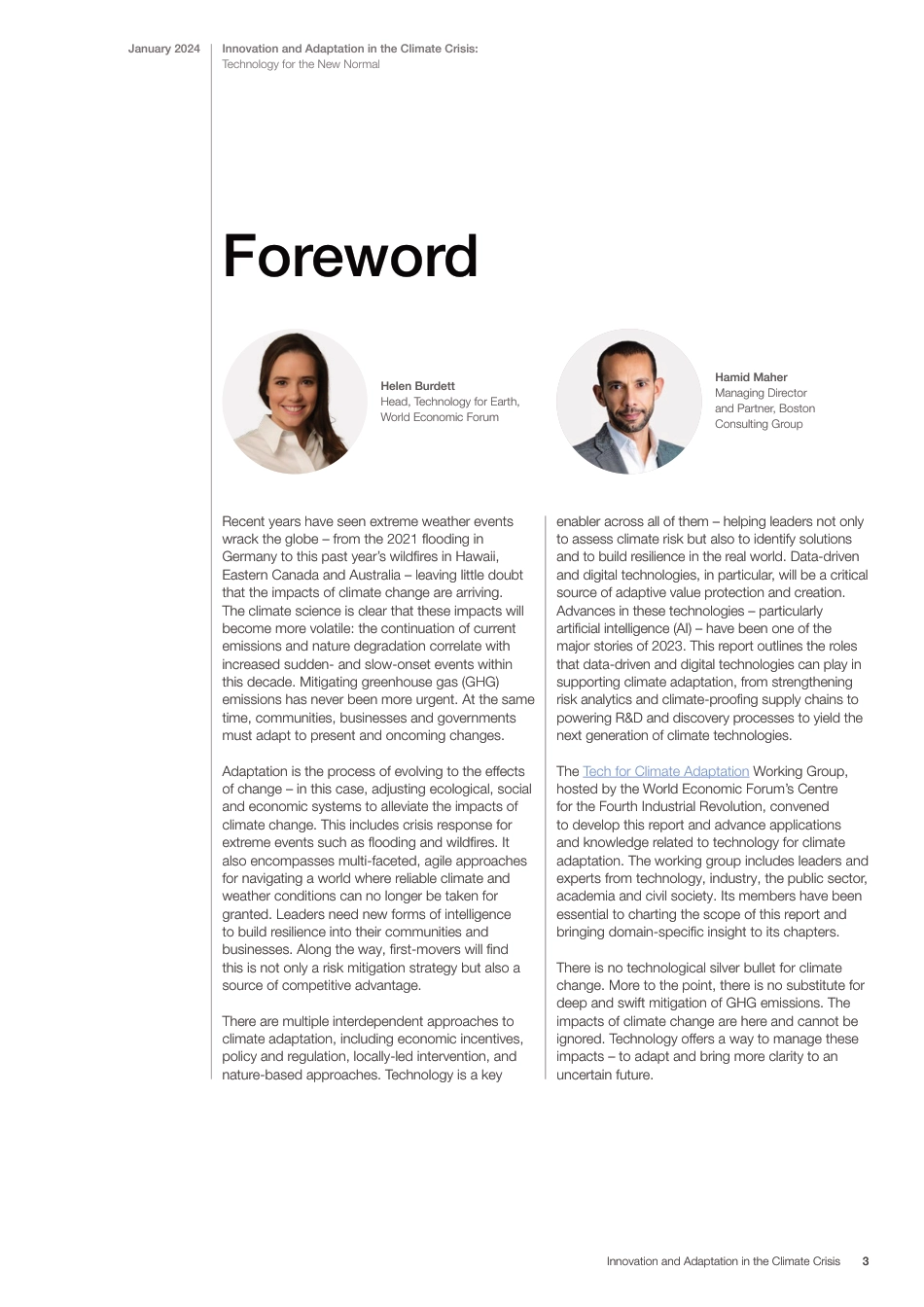Innovation and Adaptation in the Climate Crisis: Technology for the New NormalI N S I G H T R E P O R TJ A N U A R Y 2 0 2 4In collaboration with Boston Consulting GroupImages: Getty Images© 2024 World Economic Forum. All rights reserved. No part of this publication may be reproduced or transmitted in any form or by any means, including photocopying and recording, or by any information storage and retrieval system.Disclaimer This document is published by the World Economic Forum as a contribution to a project, insight area or interaction. The findings, interpretations and conclusions expressed herein are a result of a collaborative process facilitated and endorsed by the World Economic Forum but whose results do not necessarily represent the views of the World Economic Forum, nor the entirety of its Members, Partners or other stakeholders.ContentsForeword 3Executive summary 4Introduction 51 Comprehend risks (and opportunities) 121.1 Drones for data collection 141.2 IoT and sensors for data collection 141.3 Earth observation for planetary intelligence 151.4 Artificial intelligence 161.5 AR/VR to visualize climate impacts 191.6 Advanced computing to power intelligence 202 Build resilience 212.1 Climate-resilient infrastructure 242.2 Climate-resilient food systems 252.3 Resilient global supply chains 262.4 Advanced early warning systems 273 Respond dynamically 283.1 The first 72 hours 303.2 AI for humanitarian data collection 303.3 Earth observation for post-disaster analytics 313.4 AI for post-crisis decision-making 323.5 Drones to optimize search-and-rescue operations 333.6 AI to optimize mobility and evacuations 334 Multistakeholder collaboration and key enablers 354.1 Open source is the unlock 374.2 Repositionin...



